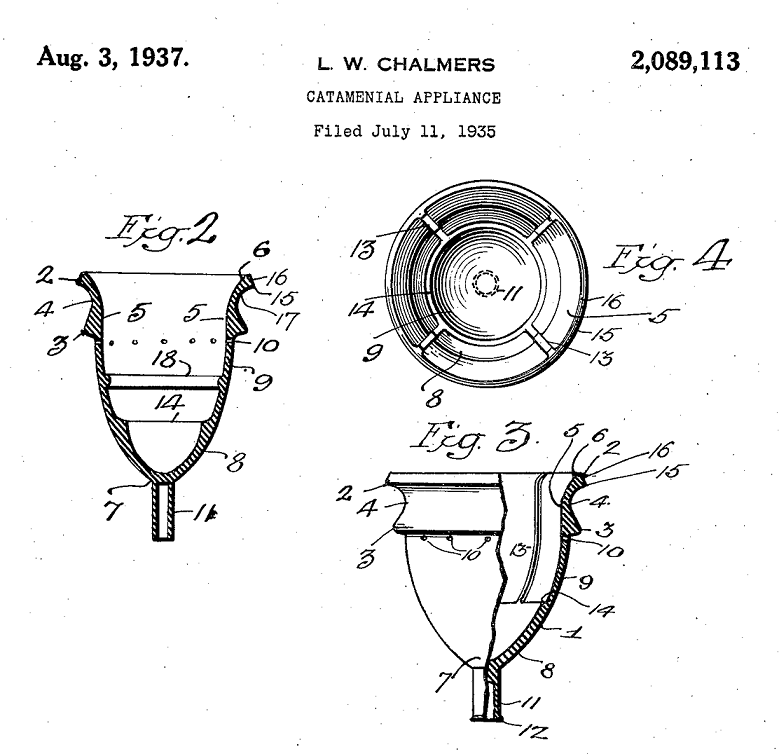The History of Menstrual Cups
If you think the menstrual cup was invented in the 21st century, you might want to sit down for this one. As a matter of fact, the first ever menstrual cup was patented by Leona Chalmers back in 1937. So as you can see, it took us more than 80 years to find the perfect period protection solution before menstrual cups became gained popularity.
Let’s rewind the clock to see how menstrual cups have evolved over the years, starting with ancient Egypt:
Early Devices
One can only imagine how women used to absorb their flows without having access to tampons, pads or menstrual cups. But the women of ancient Egypt found a way to deal with their menstruation thanks to softened papyrus. In other parts of the world, people used moss or animal skin to absorb their flow.
Then in the late 19th and early 20th centuries, internal cups were conceived as instruments to collect a woman’s menstrual flow. After that, there were numerous cup-like devices that were patented in the US and other places around the world.
Some countries used flexible sacks to collect the flow, whereas others used metal cups – not the smartest or most comfortable idea at the time now that we think about it. Most of the devices back then even used belts to hold the sacks. It goes without saying that most of them never sold commercially.
The 1930s
During the 30s, there were several devices that were patented, resembling the modern menstrual cup. But the breakthrough from among them came with Leona Chalmers’s cup, that was patented in 1937.

The Leona Chalmers’s cup was the first commercial menstrual cup that was available for sale in the US. The cup was made out of rubber and was held in place by a woman’s pelvic muscles.
However, the outbreak of World War 2 forced Chalmers to shut down production of the cup due to the scarcity of rubber. But even though she continued to sell the cups after the war was over, it was hard to encourage women to buy them. Also at the time, women’s bodies and sexuality, in general, were considered a taboo subject in that the idea of women touching their vagina was thought to be indecent for “proper” women.
The 1950s
Between the 50s to the 70s, Chalmers partnered with a larger company to produce a newer version of her cup called the Tassette. The company also created a disposable version of the cup called the Tassaway.
However, they also had to deal with the popularity of disposable pads and tampons at the time. So they invested in a huge education campaign, sent discount offers to registered nurses as well as hiring them to give advice to women in drugstores around the country.
They also went as far as to have a 40-foot tall billboard in New York City’s Times Square and still women weren’t comfortable in being intimate with their vaginas. The lack of sales finally forced the company to cease production and promotion of the cups in the US in 1973.
The 1980s
A decade after the Tassette company closed its doors, a new latex rubber menstrual cup was introduced into the American market, known simply as “The Keeper.” It was made as an homage to Leona Chalmers’ cup, comprised of brown rubber and is still available today.
The Mooncup was another cup introduced in the 80s, but was the first of its kind to be made of medical grade silicone and was manufactured in the UK.
The 1990s
In the 90s, an interlabial menstrual pad called Fresh ‘n’ Fit Padettes was introduced. The women became curious and wanted to try the product. But they still wanted sanitary pads that didn’t have anything to do with the labia. And menstrual cups were still unheard of at that time, especially in the third world countries.
The 2000s
At the start of a new millennium, a new material for menstrual cups was introduced, which was medical-grade silicone. It is hypoallergenic and resistant to bacteria. It was a suitable alternative to latex, which many felt allergic to.
There are many planet friendly period products available that are healthy and safe. They have become part mainstream society for women feminine hygiene.
The new material was quickly adopted as the new standard material for menstrual cups, not just because of the benefits, but also because it was much softer and more flexible, making it easier to fold and insert. And the softer silicone makes it easier to wear, not being bothered by rubbery edges anymore.
It was not until 2005, that Lunette founder and owner, Heli Kurjanen launched a revolution that gave resurgence to menstrual cups. The new cup had improved design features and was manufactured in Finland from medical grade silicone.
Unlike other menstrual cups, the Lunette cup is completely smooth on the inside and is relatively much easier to clean as well. And because the tub is flat, no bacteria can gather there. Click here to learn more about the Lunette.
